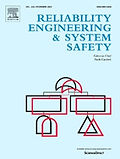Did You Know?
There is a company called Energy Vault that has created a "nondegradable battery" to help out jurisdictions that use lots of electrical power!
Overview
To be able to achieve the main goal of the AISUSTEIN program, there are going to be three different research themes. Each theme will have its own focus, be broken down into smaller main goals, and will help build the next theme. Upon completion these themes will bring a new level of awareness, understanding, knowledge, and skills.
Theme Objectives
1
2
3
Understand
the interdependencies within the infrastructure networks, along with carrying out economic and risk assessments.
Develop
a monitoring and predicting system to keep track in real-time of the health of the infrastructure networks.
Improve
the system's endurance and flexibility when it comes to the infrastructure network and similar industries.
Current Theme:
Research Theme 1
What we are striving to learn is the complexity of the energy sector within these jurisdictions. For this we need to learn about all of the pieces that rely on the energy networks, along with the pieces that the energy networks rely on. To fully understand this from all perspectives we will be merging mathematics, engineering, AI, and social sciences. This approach will give us new all-encompassing knowledge about the innerworkings of the energy networks, which will help us determine the next step, impacts and risks of possible disruptions. On top of meaningful assessment, this will pave the way for building a monitoring system for the next theme.
When it comes to how to begin understanding the interdependencies, we will split the network into two different layers, the Energy Network and the Economic Network. The Energy Network will consist of more layers for electricity, oil, and gas distribution, while the Economic Network will consist of related industries that make electric power possible to be distributed.
Did You Know?
While us at AI SUSTEIN are working towards a more sustainable and reliable energy network with AI, others are using AI to detect failure and with the treatment process of the wastewater sector.
Publications
AI shines when there are complex and variable patterns ready to be analyzed. At the moment we are developing a model to determine weak and strong interdependencies within the two interconnected layers.
Articles:
A Deep Neural Network and Bayesian Method based Framework for All-Terminal Network Reliability Estimation Considering Degradation by Alex Davila-Frias, Nita Yodo, Trung Le, and Om Prakash Yadav
Model and solution method for mean-risk cost-based post-disruption restoration of interdependent critical infrastructure networks by Basem A. Alkhaleel, Haitao Liao, Kelly M. Sullivan
Condition-based monitoring as a robust strategy towards sustainable and resilient multi-energy infrastructure systems by Nita Yodo, Tanzina Afrin, Om Prakash Yadav, Di Wu, Ying Huang
Post-Fire Analysis of Thermally Sprayed Coatings: Evaluating Microstructure, Mechanical Integrity, and Corrosion Behavior by Ratna D. Yasoda, Nour Hakim, Ying Huang, and Xiaoning Qi
Post-fire Performance of Wire-arc-Sprayed Zn-15Al Coatings by Ratna D. Yasoda, Ying Huang, Ravi Kiran, and Xiaoning Qi
Predicting Natural Gas Pipeline Failures Caused by Natural Forces: An Artificial Intelligence Classification Approach by Bright Awuku, Ying Huang, and Nita Yodo
Sustainable Development for Oil and Gas Infrastructure from Risk, Reliability, and Resilience Perspectives by Yasir Mahmood, Tanzina Afrin, Ying Huang, and Nita Yodo
A Quantitative Approach of Measuring Sustainability Risk in Pipeline Infrastructure Systems by labiba Noshin Asha, Ying Huang, Nita Yodo, and Haitao Liao
Structural Vulnerability Analysis of Interdependent Electric Power and Natural Gas Systems by Olabode Amusan, Shuomang Shi, Di Wu, and Haitao Liao
Conference Proceedings:
A Review on Cascading Failure Analysis for Integrated Power and Gas Systems by Almir Ekic, Di Wu, and Ying Huang
Presentations
In order to be able to achieve greatness we have to collaborate ideas and thoughts. The best way to come to do this is to present those ideas through different conferences and meetings with others! Below are some of our team's efforts.
Conferences:
A New Approach for Transmission Expansion Planning Considering UPFCs by Mojtaba Ahanch, Mehran Sanjabiasasi, Yaser Toghani Holari, and Roy A. McCann
A Physics-informed Latent Variables of Corrosion Growth in Oil and Gas Pipelines by Phat K. Huynh, Abdulsalam A. Alqarni, Om P. Yadav, and Trung Q. Le
An Agent-Based Diffusion Model for Solar Panel Adoption by Seyyed Farid Hashemian, Haitao Liao, and Ed Pohl
Artificial Intelligence Condition-based Maintenance towards Oil and Gas Pipeline System Resilience by Abdulsalam Alqarni, Tanzina Afrin, Om Yadav, Haitao Liao, and Nita Yodo
Fair Collective Classification in Networked Data by Karuna Bhaila, Yongkai Wu, and Xintao Wu
Multi-sensor Corrosion Growth Modeling with Latent Variables Using Hierarchical Clustering and Vector Autoregression Model by Abdulsalam A. Alqarni, Phat K. Huynh, Om P. Yadav, Trung Q. Le, and Ying Huang
Performance Evaluation of Bifacial PV Systems in Distribution Networks Operation: A CVR Study Considering Smart PV Inverter Control by Mojtaba Ahanch, Mahdi Rouholamini, Roy McCann, and Caisheng Wang
Weather Impact on Pipeline Temperature Distribution by Ying Huang, Xingyu Wang, Shuomang Shi, and Nita Yodo
Webinars:

Application of Fiber Optic Sensors for Real-Time Detection and Assessment of Interaction Between Mechanical Loads and Corrosion by Ying Huang
Meetings:

Investigation of Power Outage Data by Olabode Amusan and Di Wu

Power Grid Cascading Failure by Evan Scully and Di Wu
Outreach:

BrainSTEM Pipeline Challenge at Fargo Middle School by Ying Huang
















